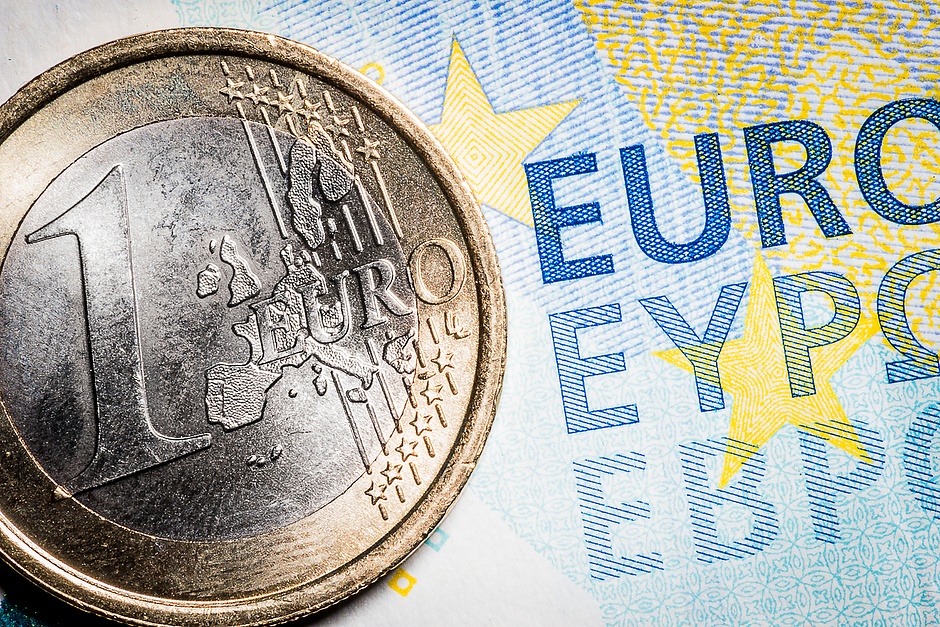EUR/USD edges lower around 1.0850 due to market caution ahead of US Nonfarm Payrolls
- EUR/USD depreciates as traders adopt caution ahead of US Nonfarm Payrolls scheduled for Friday.
- The US Dollar rebounds as market caution persists amid uncertainty ahead of the upcoming US presidential election.
- The unexpected rise in Eurozone inflation has reinforced expectations that the ECB will adopt a cautious approach to rate cuts.

EUR/USD halts its four-day winning streak, trading around 1.0870 during the Asian session on Friday. This downside is attributed to the improved US Dollar (USD) due to ongoing market caution amid uncertainty leading up to the upcoming US presidential election.
On Thursday, the US Dollar encountered difficulties as the US Personal Consumption Expenditures (PCE) Price Index indicated that core inflation rose by 2.7% year-over-year in September. The monthly core PCE Price Index rose 0.3%, in line with the consensus. However, Initial Jobless Claims fell to a five-month low of 216,000 for the week ending October 25, signaling a resilient labor market and reducing expectations for imminent rate cuts by the Federal Reserve (Fed).
Traders are awaiting the Nonfarm Payrolls (NFP) report set for release on Friday. The US economy is projected to have added 113,000 jobs in October, with the Unemployment Rate expected to remain unchanged at 4.1%.
The annual inflation rate in the Eurozone increased to 2.0% in October, up from the previous 1.7% reading and surpassing forecasts of 1.9%. The core inflation rate held steady at 2.7% year-over-year. This rise in inflation is supported by stronger-than-anticipated economic growth, with the Eurozone economy expanding by 0.4% quarter-on-quarter in Q3, twice the growth seen in Q2 and exceeding predictions of 0.2%.
This unexpected increase in inflation data has bolstered expectations that the European Central Bank (ECB) will maintain a cautious approach to rate cuts, steering clear of significant reductions.
The ECB has highlighted that inflationary pressures remain elevated, primarily due to wage growth. In its recent October meeting, the ECB reaffirmed its commitment to a "data-dependent and meeting-by-meeting" strategy for future policy decisions.
Euro FAQs
The Euro is the currency for the 19 European Union countries that belong to the Eurozone. It is the second most heavily traded currency in the world behind the US Dollar. In 2022, it accounted for 31% of all foreign exchange transactions, with an average daily turnover of over $2.2 trillion a day. EUR/USD is the most heavily traded currency pair in the world, accounting for an estimated 30% off all transactions, followed by EUR/JPY (4%), EUR/GBP (3%) and EUR/AUD (2%).
The European Central Bank (ECB) in Frankfurt, Germany, is the reserve bank for the Eurozone. The ECB sets interest rates and manages monetary policy. The ECB’s primary mandate is to maintain price stability, which means either controlling inflation or stimulating growth. Its primary tool is the raising or lowering of interest rates. Relatively high interest rates – or the expectation of higher rates – will usually benefit the Euro and vice versa. The ECB Governing Council makes monetary policy decisions at meetings held eight times a year. Decisions are made by heads of the Eurozone national banks and six permanent members, including the President of the ECB, Christine Lagarde.
Eurozone inflation data, measured by the Harmonized Index of Consumer Prices (HICP), is an important econometric for the Euro. If inflation rises more than expected, especially if above the ECB’s 2% target, it obliges the ECB to raise interest rates to bring it back under control. Relatively high interest rates compared to its counterparts will usually benefit the Euro, as it makes the region more attractive as a place for global investors to park their money.
Data releases gauge the health of the economy and can impact on the Euro. Indicators such as GDP, Manufacturing and Services PMIs, employment, and consumer sentiment surveys can all influence the direction of the single currency. A strong economy is good for the Euro. Not only does it attract more foreign investment but it may encourage the ECB to put up interest rates, which will directly strengthen the Euro. Otherwise, if economic data is weak, the Euro is likely to fall. Economic data for the four largest economies in the euro area (Germany, France, Italy and Spain) are especially significant, as they account for 75% of the Eurozone’s economy.
Another significant data release for the Euro is the Trade Balance. This indicator measures the difference between what a country earns from its exports and what it spends on imports over a given period. If a country produces highly sought after exports then its currency will gain in value purely from the extra demand created from foreign buyers seeking to purchase these goods. Therefore, a positive net Trade Balance strengthens a currency and vice versa for a negative balance.
Author

Akhtar Faruqui
FXStreet
Akhtar Faruqui is a Forex Analyst based in New Delhi, India. With a keen eye for market trends and a passion for dissecting complex financial dynamics, he is dedicated to delivering accurate and insightful Forex news and analysis.

















